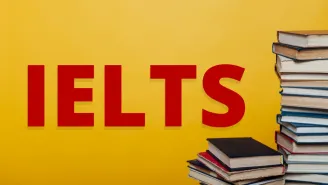Healthy Intentions Reading Answer Passage
Healthy Intentions Reading Answer Passage
Most of us have healthy intentions when it comes to the food we eat. But it can be tough. Especially when you consider that our bodies have not properly adapted to our highly processed fast-food diets.
Paragraph A. One hundred years ago, the leading causes of death in the industrial world were infectious diseases such as tuberculosis, influenza, and pneumonia. Since then, the emergence of antibiotics, vaccines, and public health controls has reduced the impact of infectious disease. Today, the top killers are non-infectious illnesses related essentially to lifestyle (diet, smoking, and lack of exercise). The main causes of death in the United States in 1997 were heart disease, cancer, and stroke. Chronic health problems, such as obesity, non insulin-dependent diabetes, and osteoporosis, which are not necessarily lethal but nonetheless debilitating, are steadily increasing. It is clear that economic and technical progress is no assurance of good health.
Paragraph B. Humans are quantitatively different from other animals because we manipulate the flow of energy and resources through the ecosystem to our advantage and, consequently, to the detriment of other organisms. That is why we compete so successfully with other species. But with this success come some inherent failings, particularly in terms of our health.
Paragraph C. According to physician Boyd Eaton and his anthropologist colleagues, despite all our technological wizardry and intellectual advances, modern humans are seriously malnourished. The human body evolved to eat a very different diet from that which most of us consume today. Before the advent of agriculture, about ten thousand years ago, people were hunter-gatherers, the food varied with the seasons and climate, and all were obtained from local sources. Our ancestors rarely, if ever, ate grains or drank the milk of other animals.
Paragraph D. Although ten thousand years seems a long time ago, 99.99 per cent of our genetic material was already formed. Thus, we are not well adapted to an agriculturally based diet of cereals and dairy products. At least 100,000 generations of people were hunter-gatherers, only 500 generations have depended on agriculture, only ten generations have lived since the onset of the industrial age, and only two generations have grown up with highly processed fast foods. Physicians Randolph Nesse and George Williams write: ‘Our bodies were designed over the course of millions of years of lives spent in small groups hunting and gathering on the plains of Africa. Natural selection has not had time to revise our bodies for coping with fatty diets, automobiles, drugs, artificial lights, and central heating. From this mismatch between our design and our environment arises much, perhaps most, preventable modern disease.’
Paragraph E. Do we really want to eat like prehistoric humans’? Surely cavemen were not healthy? Surely their life was hard and short? Apparently not. Archaeological evidence indicates that these hunter- gatherer ancestors were robust, strong, and lean with no sign of osteoporosis or arthritis —- even at more advanced ages. Paleolithic humans ate a diet similar to that of wild chimpanzees and gorillas today: raw fruit, nuts, seeds, vegetation, fresh untreated water, insects, and wild-game meat low in saturated fats. Much of their food was hard and bitter. Most important, like chimpanzees and gorillas, prehistoric humans ate a wide variety of plants — an estimated 100 to 300 different types in one year. Nowadays, even health-conscious, rich westerners seldom consume more than twenty to thirty different species of plants.
Paragraph F. The early human diet is estimated to have included more than 100 grams of fibre a day. Today, the recommended level of 30 grams is rarely achieved by most of us. Humans and lowland gorillas share similar digestive tracts — in particular, the colon — but, while gorillas derive up to 60 per cent of their total energy from fibre fermentation in the colon, modern humans get only about 4 per cent. When gorillas are brought into captivity and fed on lower-fibre diets containing meat and eggs, they suffer from many common human disorders: cardiovascular disease, ulcerative colitis, and high cholesterol. Their natural diet, rich in antioxidants and fibre, apparently prevents these diseases in the wild, suggesting that such a diet may have serious implications for our own health.
Paragraph G. Not all agricultural societies have taken the same road. Many traditional agriculturalists maintain the diversity of their diet by eating a variety of herbs and other plant compounds, along with meat and grain. The Hausa people of northern Nigeria, for example, traditionally include up to twenty wild medicinal plants in their grain-based soups, and peoples who have become heavily reliant on animal products have found ways of countering the negative effects of such a diet. While the Masai of Africa eat meat and drink blood, milk, and animal fat as their only sources of protein, they suffer less heart trouble than Westerners. One reason is that they always combine their animal products with strong, bitter antioxidant herbs. In other words, the Masai have balanced the intake of oxidising and anti-oxidizing compounds. According to Timothy Johns, it is not the high intake of animal fat or the low intake of antioxidants that creates so many health problems in industrial countries; it is the lack of balance between the two.
Paragraph H. Eating the right foods and natural medicines requires sensitivity to subtle changes in appetite. Do I fancy something sweet, sour, salty, stimulating, or sedating? What sort of hunger is it? And after consumption, has the need been satisfied? Such subtleties are easily overridden by artificially created super-stimuli in processed foods that leave us unable to select a healthy diet. We need to listen more carefully to our bodies’ cravings and take an intentional role in maintaining our health before disease sets in.
Let’s explore the questions and answers of the Healthy Intentions reading answer passage.
Healthy Intentions Reading Answers with Sample Questions
Have you read the passage? Now, take the test and find Healthy Intentions Reading answers! Try to answer these questions by yourself before you sneak a peek at the answers given below.
Check Out Top 40+ IELTS Reading Practice Test Questions with Answers
Below are some top 40+ free IELTS Reading Practice test online questions with detailed answers to enhance your IELTS preparation online. We have provided sample passages for each test type for your reference.
- What Is Exploration Reading Answers
- Effects Of Noise Reading Answers
- The Discovery Of Baby Mammoth Reading Answers
- The Dead Sea Scrolls Reading Answers
- The Ring-Tailed Lemur Reading Answers
- Why We Need To Protect Polar Bears Reading Answers
- Nutmeg A Valuable Spice Reading Answers
- What Is Meaning Reading Answers
- Cutty Sark Reading Answers
- The Step Pyramid Of Djoser Reading Answers
- South Pole Adventurer Reading Answers
- The Future Of Work Reading Answers
- Ambergris Reading Answers
- Trees In Trouble Reading Answers
- Could Urban Engineers Learn From Dance Reading Answers
- The Flavour Of Pleasure Reading Answers
- The Value Of A College Degree Reading Answers
- Why You Should Delegate Tasks To Team Members Reading Answers
- Corporate Social Responsibility Reading Answers
- Forest Management In Pennsylvania USA Reading Answers
- Making Time For Science Reading Answers
- The Power Of Play Reading Answers
- Coastal Archaeology Of Britain Reading Answers
- How The Other Half Thinks Reading Answers
- Changes In Reading Habits Reading Answers
- The Forgotten Forest Reading Answers
- When Conversations Flow Reading Answers
- Attitudes Towards Artificial Intelligence Reading Answers
- The Ingenuity Gap Reading Answers
- A Bar At The Folies Reading Answers
- Booking A Wessex Cottages Holiday Reading Answers
- Sunset Tours Reading Answers
- Bird Migration Reading Answers
- Clutter Bugs Beware Reading Answers
- The Hidden Histories Of Exploration Exhibition Reading Answers
- Calisthenics Reading Answers
- Having A Lovely Time Reading Answers
- The Return Of Huarango Reading Answers
- Summer Activities At London Kew Gardens Reading Answers
- Computer Games For Preschoolers Reading Answers
- Extinct The Giant Deer Reading Answers
- Micro Enterprise Credit For Street Youth Reading Answers
- Plain English Campaign Reading Answers
- Glow Worms Reading Answers
- How To Prepare For An Interview Reading Answers
- Quiet Roads Ahead Reading Answers
- Sculpture Reading Answers
- Cornwall Reading Answers







